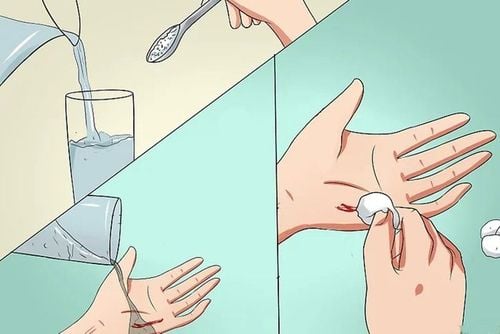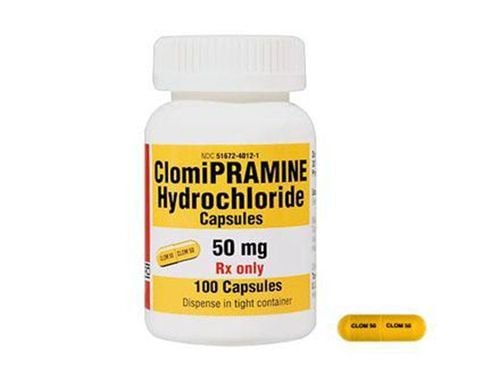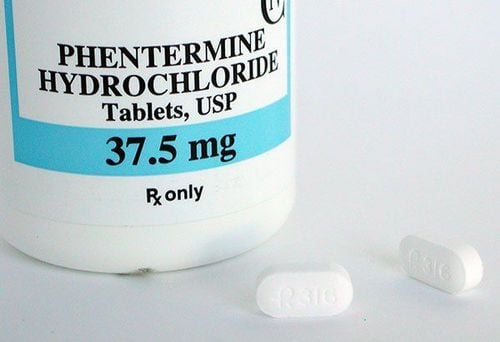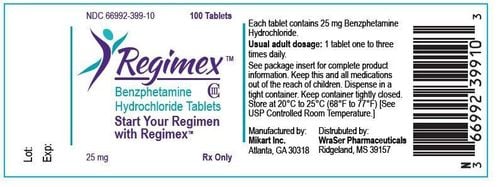This is an automatically translated article.
Running, the extremely popular form of exercise. Running also has many health benefits, and is one of the best types of exercise to help you lose weight. This article explains more about the benefits of running for weight loss.1. Running patterns
There are different types of running, the right way to lose weight, and each has its own purpose and benefits. And how many kilometers do you run a day to lose weight? Here are the most common types:Basic run: What most people call a casual run, average running lengths of about 10km and work at your natural pace. Long Run: Run at the same speed, but over a greater distance of about 15-20 km. They help improve the body's overall fitness and endurance. Interval runs: Short, high-intensity runs that are repeated many times with short rests between sets. These runs help train your strength and running speed. Hill Run: Similar to interval running but runs on hills. This exercise trains your running strength and speed while improving endurance. Recovery runs: Slow runs are done after more difficult runs like hill runs to add more distance to your overall run. Continuous runs: These runs mimic competitive running by starting slowly and ending at a faster pace, helping to build endurance, speed, and reduce fatigue.

Có nhiều kiểu chạy khác nhau, chạy bộ đúng cách để giảm cân và mỗi kiểu đều có mục đích và lợi ích riêng
2. The process of burning calories from running exercises
Losing weight requires you to burn more calories than you consume, and exercise can help you do so. Does running lose weight? Jogging is a great option, as it burns more calories than most other types of exercise because it requires different muscles to work together hard.In particular, high-intensity interval training (HIIT) involving running burns the most calories per minute using different muscles at maximum capacity.
The difference in calories burned when running versus other workouts is supported by research. A study conducted in 12 men and 12 women compared how many calories running 1,600 meters burned and whether this burned more than walking the same distance. The results showed that, on average, running on a treadmill burned 33 calories more calories than walking on the track and 35 calories more than walking.
At first, 33–35 calories might not be a big difference, but running 10 times can burn 330–350 calories more than walking the same distance.
A Harvard University report compared the 30-minute calorie burn of people at three different weights and found similar results. Specifically, they found that a 70kg person could burn 372 calories in 30 minutes of running at a moderate pace of 10 kilometers an hour. This is the number of calories burned during vigorous swimming and martial arts training, and even more than the calories burned in a 30-minute basketball game.
3. High Intensity Running Continues to Burn Calories After Workout
Doing any exercise regularly will help you lose weight, but only certain types of exercise will continue to burn calories even after you're done.High-intensity runs like hill repeats and interval runs can continue to burn calories up to 48 hours after you've worked out. These exercises use more muscles and require more energy afterwards to recover. This is often referred to as the "afterburn effect" in the fitness community. Some studies have found that the “afterburn effect” can help you burn more calories over time.
In one study, 10 men cycled for 45 minutes at high speed to calculate how many calories they burned after a workout and for how long. The average participant burned 519 calories during the workout and an extra 190 calories in the 14 hours after the workout.

Chạy cường độ cao tiếp tục đốt cháy calo sau khi tập luyện
4. High-intensity running suppresses appetite and helps you eat less
Many people try to reduce their calorie intake by eating less food or changing the foods they eat. These ways sometimes only increase hunger and make weight loss a challenge.Several studies have found that intense running can help combat this struggle by reducing your appetite after a workout.
The exact processes surrounding this response are unclear, but one way intense running can reduce cravings is by suppressing levels of the hunger hormone ghrelin and producing more of the satiety hormone. as peptide YY (PYY).
A study conducted with 11 men found that running for 60 minutes or strength training for 90 minutes reduced ghrelin levels compared to no exercise.
5. Aim for moderate to high intensity running to lose belly fat
Many studies show a link between belly fat and an increased risk of heart disease, type 2 diabetes, and many other diseases. Studies have found that moderate to high intensity aerobic exercise like running can reduce belly fat, along with dietary changes.An analysis of 15 studies and 852 participants found that aerobic exercise reduced belly fat without any dietary changes. However, moderate to high intensity training is the most effective at reducing belly fat.

Tập thể dục nhịp điệu từ trung bình đến cao như chạy bộ có thể giảm mỡ bụng
6. Running has many other health benefits
In addition to helping with weight loss, running has many other health benefits. Some specific health problems that running can help prevent or reduce include:Heart disease : A 15-year study with over 50,000 participants found that running for at least 5 to 10 minutes a day , even at low speeds, the reduction in heart disease risk can be as high as 45%. Blood sugar: Jogging can lower blood sugar by making muscle cells more sensitive to insulin, which helps sugar move into muscle cells for storage. Cataracts: Research has shown that moderate-speed walking and vigorous running both reduce the risk of cataracts, and more exercise directly leads to a lower risk. Falls: Research shows that older people who run are less likely to fall because their leg muscles are more agile. Knee Injury: A common myth that running is bad for the knee. An analysis of 28 studies disproved this misconception, finding strong evidence linking physical activity with stronger knee tissue. Knee pain: Running can also help relieve knee pain. One study in participants with an average age of 64 years showed that running was not associated with knee pain or arthritis. Instead, the participants who ran more actually had less knee pain.
7. Some basics you should know before you start working out
Frequency: To start, aim to run 3 to 4 days per week, allowing enough recovery time between workouts. Warm-up: Before each running session, you must warm up and stretch your body to prepare for the run. Start with a stretch, followed by 5 minutes of walking at an easy pace, and slowly work your way up to a strength walk. Cool down: At the end of your running workout, make sure to cool down with a 5-minute walk, gradually slowing down as you go. Total Time: Aim for a total workout of about 30 minutes, including: 5 minutes to warm up, 5 minutes to cool down, and 20 minutes of running/walking in between.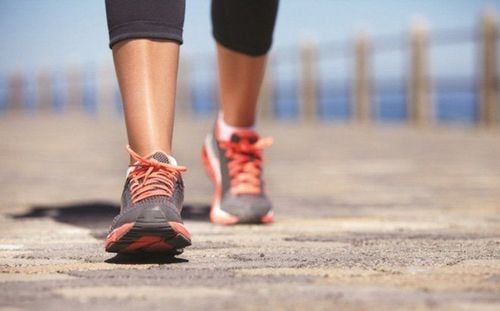
Khi kết thúc bài tập chạy, hãy đảm bảo hạ nhiệt với 5 phút đi bộ, giảm dần tốc độ khi bạn đi
8. How to stay motivated
Does running for weight loss really happen? Sticking to a dedicated running plan can help you achieve long-term success with your weight loss goals.The trick to staying motivated is to keep it fun so you're not tempted to create any excuses to avoid your workout.
You can keep training interesting by changing your running route every few weeks or adding different running patterns like interval or hill repetitions.
Running with a challenger friend can keep you accountable and provide extra safety if you run at the beginning or end of the day.
Running, a great form of exercise for weight loss, burns a lot of calories, can help you keep burning calories long after your workout, can help suppress appetite and burn belly fat. Furthermore, running has many other health benefits and is very simple to start. Unlike many other types of exercise, running requires little equipment, can be done anywhere, and has many ways to keep things interesting. If you find it difficult to motivate yourself to run, try finding a running partner or change up your routine regularly.
Please follow the website ( www.vinmec.com ) for more information on health care instructions, which we will update regularly.
Please dial HOTLINE for more information or register for an appointment HERE. Download MyVinmec app to make appointments faster and to manage your bookings easily.
Reference sources: healthline.com, runnersworld.com, livestrong.com



